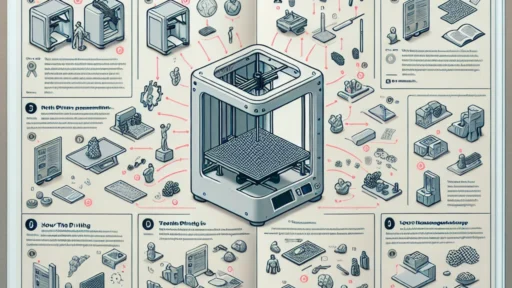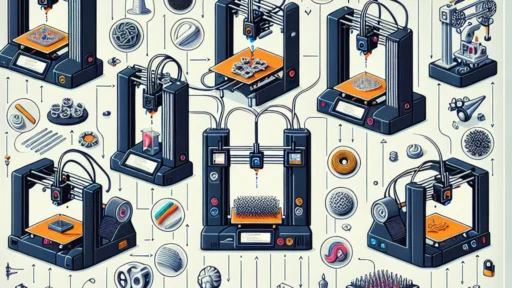Comparing Creality Models: Which One Suits Your Needs?
Creality has become a household name in the world of 3D printing, known for producing high-quality and affordable printers suitable for newcomers and seasoned professionals alike. With a variety of models available, choosing the right one can be overwhelming. In this post, we will explore some of the most popular Creality models, analyzing their features, advantages, and potential drawbacks to help you decide which one might be best suited for your needs.
The Contenders
- Creality Ender 3 Series
- Creality CR-10 Series
- Creality Ender 5 Series
- Creality Sermoon Series
- Creality HALOT Series
1. Creality Ender 3 Series
The Ender 3 series has often been hailed as one of the best entry-level 3D printers on the market. Its affordability, reliability, and excellent print quality make it an ideal option for beginners who want to explore the world of 3D printing without breaking the bank.
Pros:
- Low Cost: The Ender 3 series is generally priced under $300, making it accessible for hobbyists.
- Large Printing Volume: With a build volume of around 235 x 235 x 250 mm, you can tackle a variety of projects.
- Community Support: A large user base means plenty of resources, mods, and troubleshooting advice available online.
Cons:
- Assembly Required: The printer comes in a kit, which means some mechanical aptitude is necessary.
- Limited Features: The basic model may lack advanced features such as an auto-bed leveling system.
Best For: Beginners, hobbyists, and those on a budget.
2. Creality CR-10 Series
For those who crave larger prints without sacrificing quality, the CR-10 series is a perfect middle-ground option. With a larger build volume and more advanced features, the CR-10 strikes a good balance between quality and usability.
Pros:
- Impressive Build Size: Ranging up to 1000 mm in height for some models, the CR-10 series meets the demands of larger prints.
- Quality Components: Solid construction and an all-metal frame contribute to both durability and print quality.
- Modular Design: Upgrades and modifications are relatively easy to implement.
Cons:
- Price: The CR-10 series generally starts around $400, which might be steep for casual users.
- Precision Tuning: With a larger volume, achieving significant precision could require more tweaking and tweaking.
Best For: Users needing large prints and those who have some experience with 3D printers.
3. Creality Ender 5 Series
The Ender 5 series builds on the success of the Ender 3 while introducing a cuboid frame design for greater stability. This model is especially popular among those who wish to dive deeper into 3D printing without advanced technical skills.
Pros:
- Stable Frame: The cube design provides enhanced stability, leading to improved print quality.
- Easy Assembly: It comes partially assembled, making it more user-friendly than some other models.
- Decent Print Volume: Offers a build size of around 220 x 220 x 300 mm.
Cons:
- Limited Features: Still lacks some advanced features like a touch screen or dual-extrusion options.
- Price Point: Positioned between the Ender 3 and CR-10, it may not be the most economical choice for every user.
Best For: Intermediate users seeking better stability in their prints.
4. Creality Sermoon Series
An exciting addition to the Creality lineup, the Sermoon series offers an enclosed build environment, making it ideal for printing with a range of materials, including ABS and nylon.
Pros:
- Enclosed Design: Protects prints while providing a stable temperature, yielding higher quality results with challenging materials.
- Built-in Filament Detection: Prevents print failures due to filament issues.
- Noise Reduction: Generally quieter compared to open frame printers.
Cons:
- Higher Price Tag: The enclosed design comes at a premium price, making it less accessible for entry-level users.
- Less DIY-Friendly: Less room for modifications compared to more basic models.
Best For: Professionals and users looking to print with advanced materials.
5. Creality HALOT Series
For those interested in resin printing, the HALOT series includes advanced features like high-resolution 4K screens and impressive print speeds, making them a formidable choice in the resin printer market.
Pros:
- Superb Detail: The high-resolution screens allow for incredible detail in prints.
- Speed: Faster curing times lead to quicker prints compared to traditional filament printers.
Cons:
- Resin Handling: Requires careful handling, with potential for mess and odor.
- Smaller Build Volume: Generally has a smaller print area compared to filament printers.
Best For: Artists, detailed model makers, and users focused on high-detail prints.
Conclusion
When it comes down to selecting the right Creality 3D printer, your choice should ultimately align with your specific needs, skill level, and project requirements. The Ender series is excellent for beginners, while the CR-10 and Ender 5 offer more advanced options for those looking for larger or more stable prints. The Sermoon series is recommended for those interested in using a broader range of materials, and the HALOT series serves as the go-to for high-resolution resin printing. Consider your future projects, budget, and how much effort you are willing to invest in assembly and tweaking before making your final decision. Happy printing!






